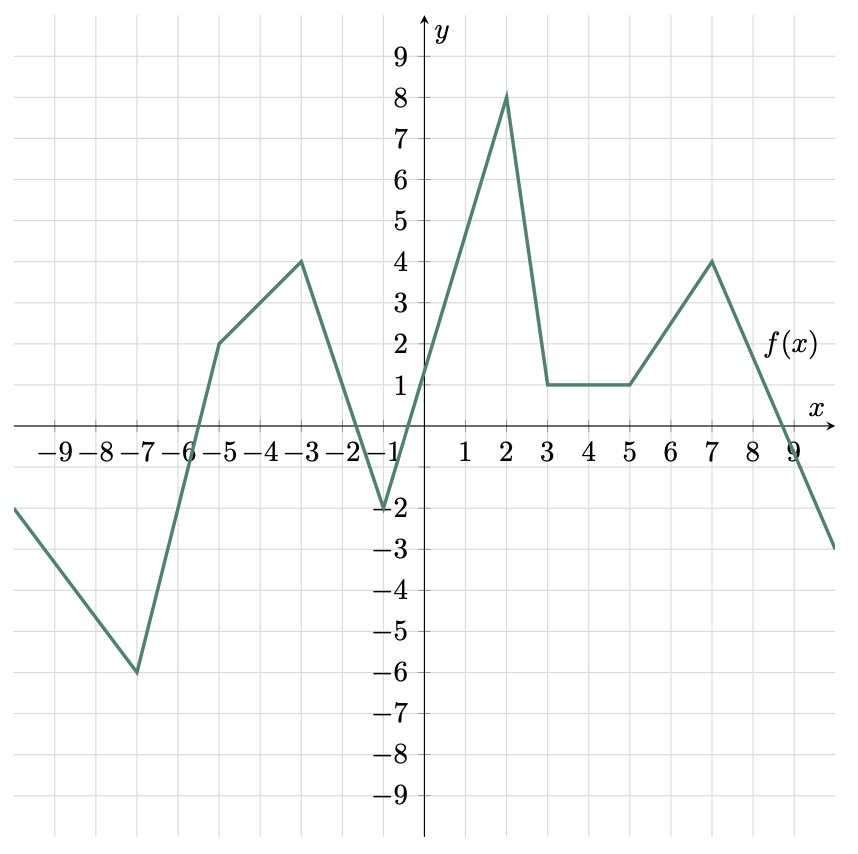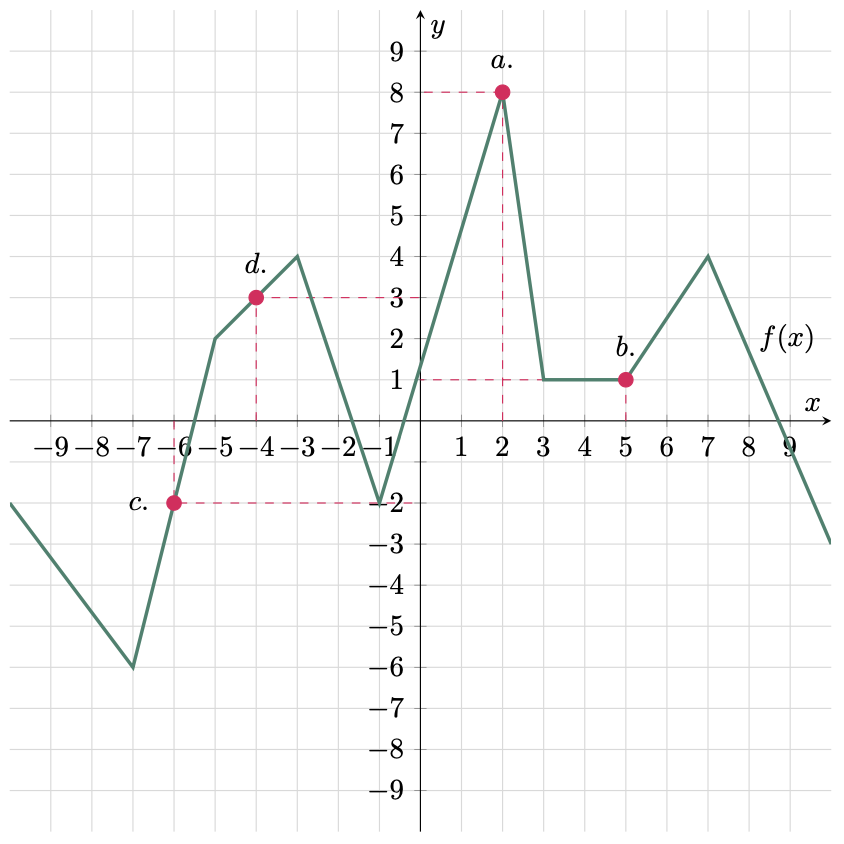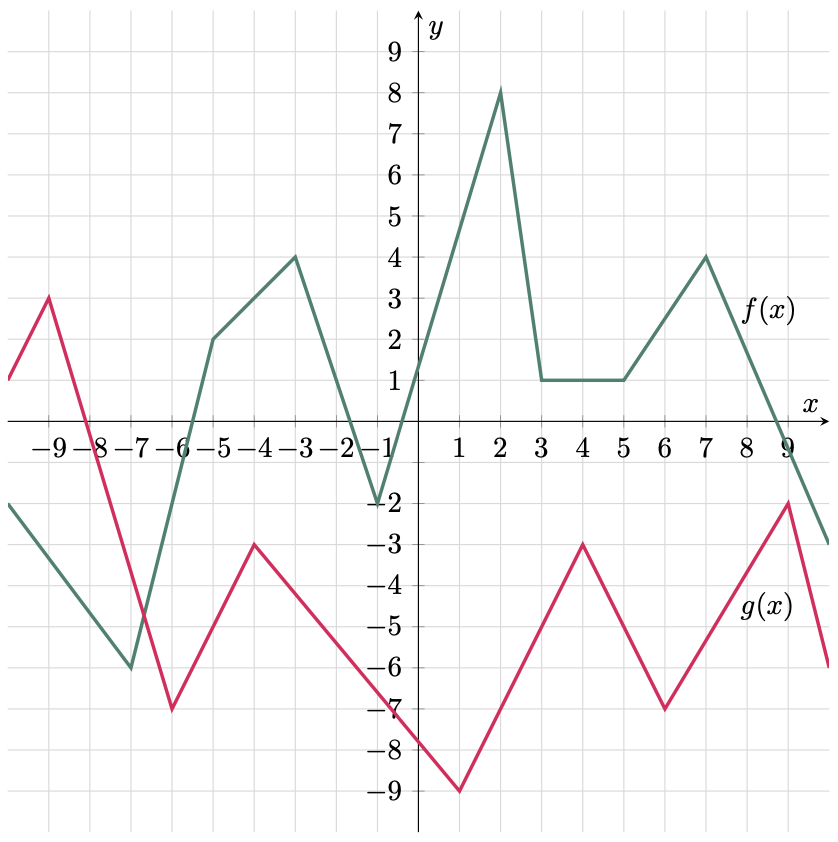In analyzing functions represented in a graphical form, we can apply our previous understanding of functions, as we have emphasized the importance of distinguishing between dependent and independent variables. To recall, in Function Notation, the independent variable is located inside the parenthesis, while the dependent variable is on the other side of the equation. Translating this to a graphical form, the independent variable corresponds to the horizontal position, and the dependent variable determines the vertical position. With this in mind, interpreting functions from a graph becomes more intuitive. To solidify this understanding, let’s consider some examples.
$\example{1}$ From the given graph, find: a. $ f(2) $, b. $ f(5) $, c. $ f(-6) $, d. $ f(-4) $

$\solution$
To evaluate functions from a graph, remember that $y=f(x)$, so $f(2)$ means that the $x$-coordinate is 2, and if we substitute it to the function we would get its $y$-coordinate. See the figure below.

Hence,
a. $ f(2) =8$
b. $ f(5) =1$
c. $ f(-6) =-2$
d. $ f(-4) =3$
$\example{2}$ From the given graph, find: a. $ f(3)+g(4) $, b. $ (f-g)(5) $, c. $ 5[g(9)] + 2[f(-4)] $, d. $ 7[(g\cdot f)(-6)] $

$\solution$
In this problem, the solution is similar to the previous example. However, we will only be applying an additional competency that we have learned in the Combination of Functions.
$\For{a}$
\(\begin{align*}
f(3)+g(4) &= 1+(-3) \\
&= 1-3 \\
&= -2 \tagans
\end{align*}\)
$\For{b}$
\(\begin{align*}
(f-g)(5) &= f(5)-g(5) \\
&= 1-(-5) \\
&= 1+5 \\
&= 6 \tagans
\end{align*}\)
$\For{c}$
\(\begin{align*}
5[g(9)] + 2[f(-4)] &= 5[-2]+2[3] \\
&= -10+6 \\
&= -4 \tagans
\end{align*}\)
$\For{b}$
\(\begin{align*}
7[(g\cdot f)(-6)] &= 7[g(-6) \cdot f(-6)] \\
&= 7[(-7)\cdot (-2)] \\
&= 7(14) \\
&= 98 \tagans
\end{align*}\)

